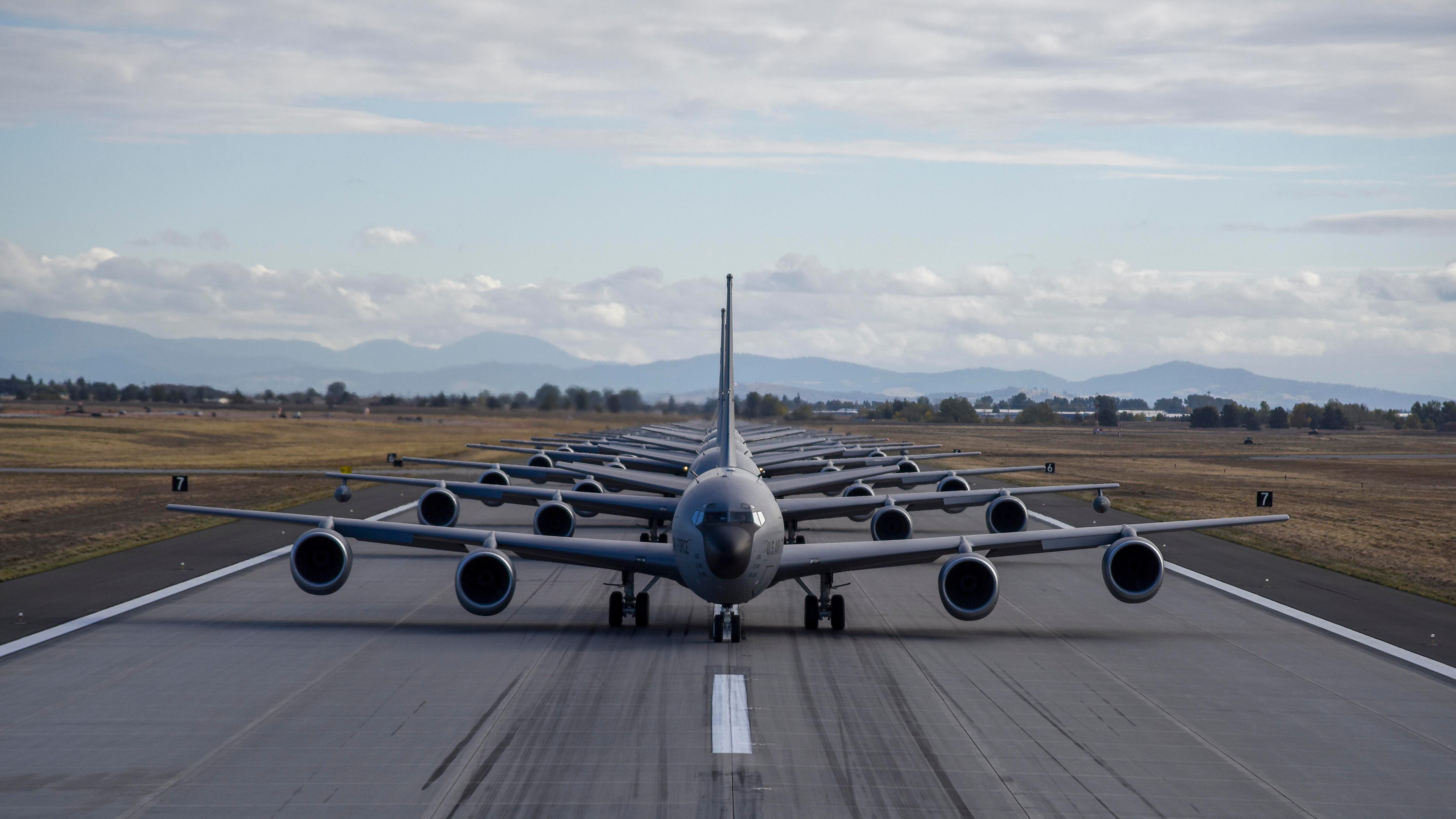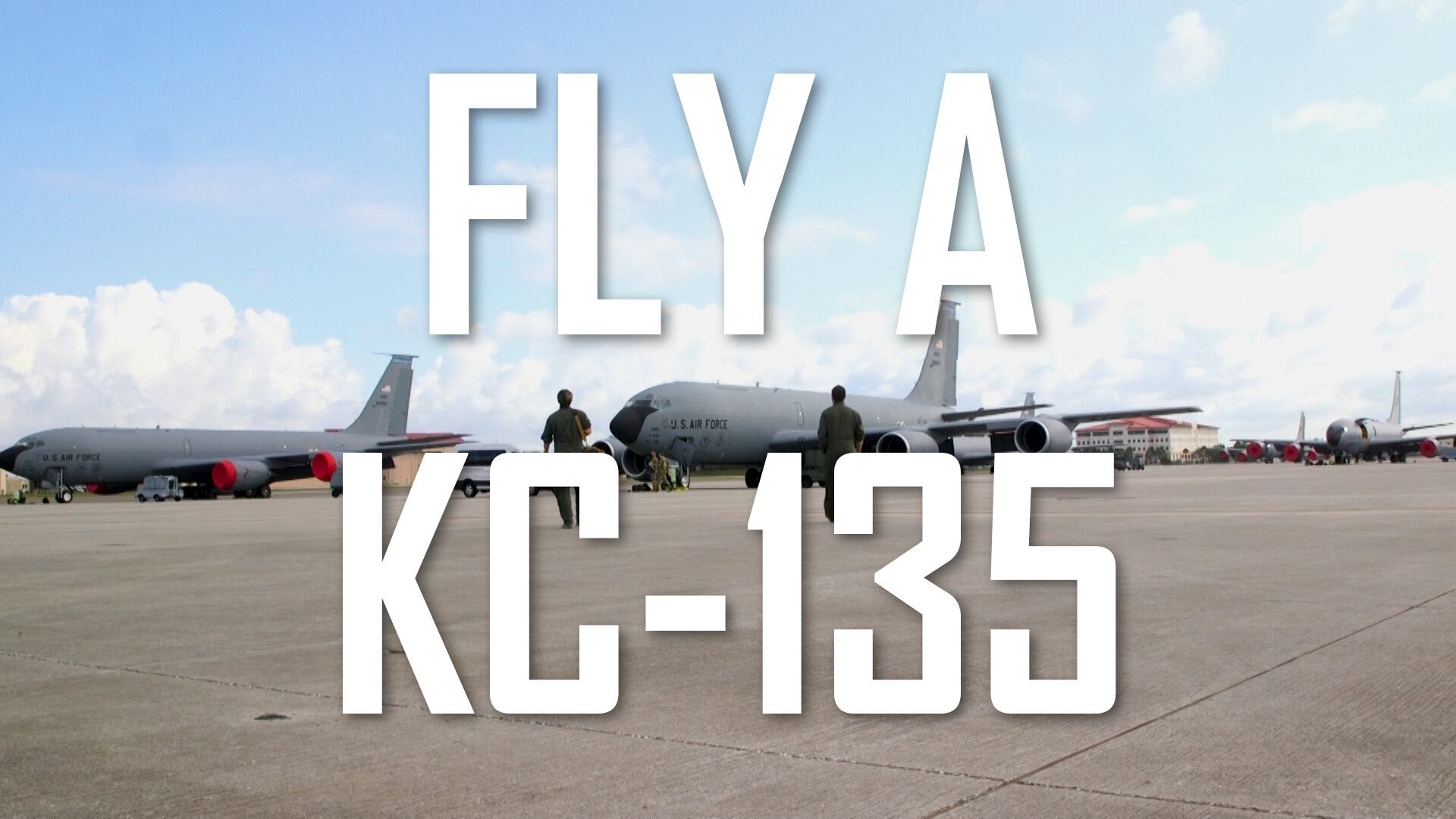The Air Force’s KC-135 Stratotanker fleet has returned to regular operations after the service discovered that a faulty power supply was to blame for causing two jets to unexpectedly nosedive earlier this year.
Problems with the power supply, a subcomponent of the autopilot system, in May led the tankers to malfunction and suddenly tilt toward the ground. Neither jet crashed because of the issue.
“[The subcomponent] was replaced and the system performed as designed,” Capt. Frederick Wallace, an Air Mobility Command spokesperson, said Wednesday.
RELATED

The Air Force temporarily barred pilots in jets with the Block 45 slate of upgrades, which includes autopilot improvements, from using the automatic system when flying lower than 10,000 feet in nearly all situations. Block 45 has been installed on about 200 aircraft so far, according to the service’s budget documents. It is slated for use on 399 airframes based on the C-135 — all but a few dozen of which are KC-135s — plus 19 pilot simulators and five cockpit simulators.
Flight restrictions were lifted Oct. 15 after an investigation found no issues with the autopilot itself, Wallace said.
“The investigative team discovered the autopilot did not, in fact, command a pitch down,” AMC spokesperson Maj. Hope Cronin added. Analysis showed that the autopilot system was not turned on when the nosedives occurred, she said.
The service did not answer why the restrictions lasted a week longer than anticipated, or whether other tankers in the fleet could have faulty autopilot subcomponents as well.
The Drive first reported on the problem and the resulting flight restriction on Oct. 7.
“The pilot and copilot were unable to disconnect the autopilot using the [takeoff/go-around]/disconnect switch or stabilizer trim inputs,” Air Force paperwork said of the two nosedives, according to The Drive. “One incident occurred at 2,500 feet [above ground level] in the traffic pattern.”
AMC did not provide any further information about those instances or how airmen reacted.
RELATED

Moving forward, the service is surveying airmen to gather data on any problems that the flight data recorder onboard may have missed.
“Crews have been encouraged to continue reporting any issues they have via safety, maintenance, and standardization and evaluations channels,” Cronin said.
Stratotankers have been in the inventory since 1957 and deploy around the world on aerial refueling and aeromedical evacuation missions with active-duty, Air National Guard and Air Force Reserve units.
The Air Force owns about 390 KC-135s but wants to downsize to 376 in fiscal 2022 to make room for the new KC-46 Pegasus tanker. Congress is still considering that proposal as part of the annual defense policy and spending bills.
Rachel Cohen is the editor of Air Force Times. She joined the publication as its senior reporter in March 2021. Her work has appeared in the Washington Post, the Frederick News-Post (Md.), Air and Space Forces Magazine, Inside Defense, Inside Health Policy and elsewhere.




